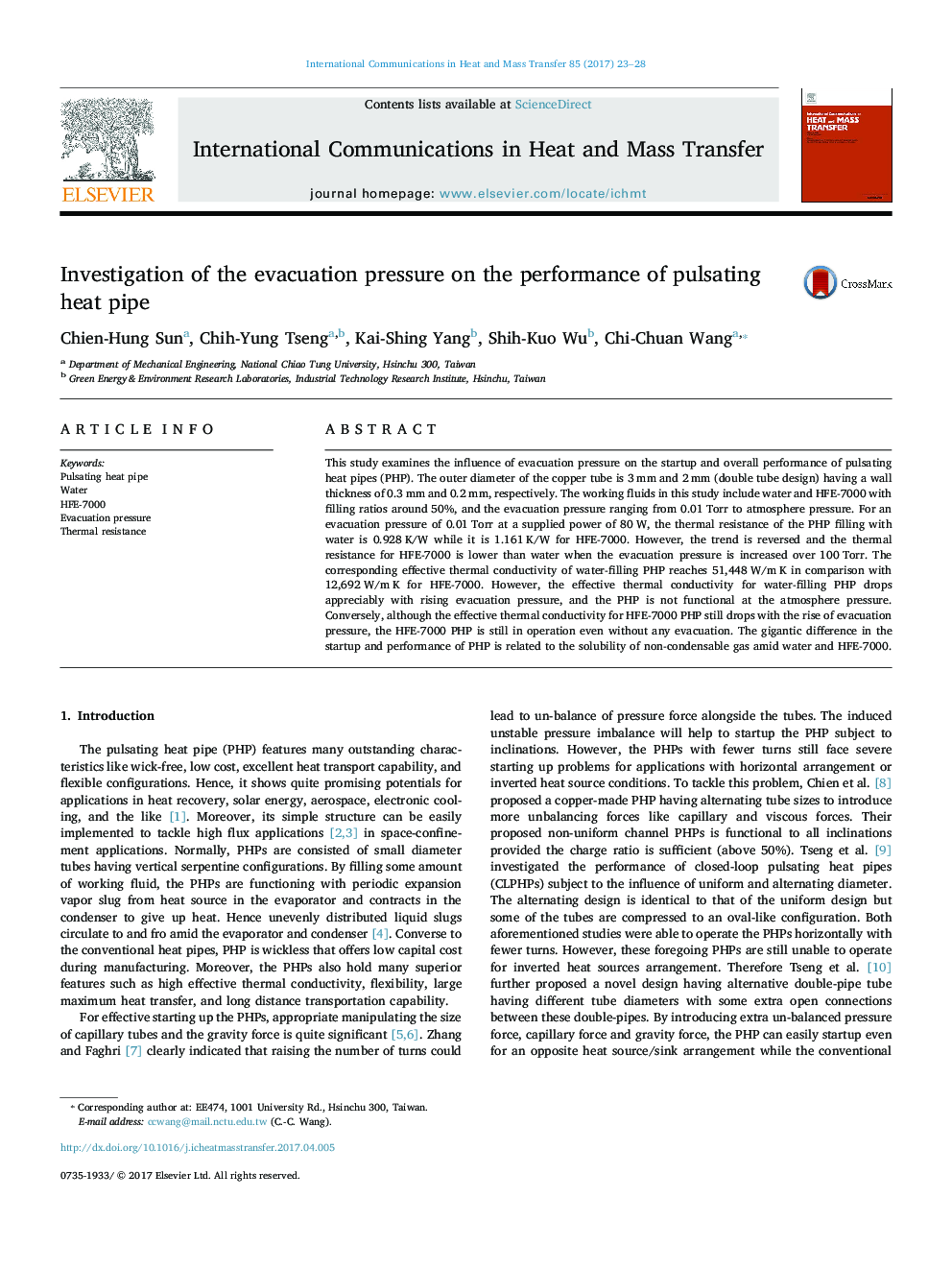| Article ID | Journal | Published Year | Pages | File Type |
|---|---|---|---|---|
| 4992881 | International Communications in Heat and Mass Transfer | 2017 | 6 Pages |
Abstract
This study examines the influence of evacuation pressure on the startup and overall performance of pulsating heat pipes (PHP). The outer diameter of the copper tube is 3 mm and 2 mm (double tube design) having a wall thickness of 0.3 mm and 0.2 mm, respectively. The working fluids in this study include water and HFE-7000 with filling ratios around 50%, and the evacuation pressure ranging from 0.01 Torr to atmosphere pressure. For an evacuation pressure of 0.01 Torr at a supplied power of 80 W, the thermal resistance of the PHP filling with water is 0.928 K/W while it is 1.161 K/W for HFE-7000. However, the trend is reversed and the thermal resistance for HFE-7000 is lower than water when the evacuation pressure is increased over 100 Torr. The corresponding effective thermal conductivity of water-filling PHP reaches 51,448 W/m K in comparison with 12,692 W/m K for HFE-7000. However, the effective thermal conductivity for water-filling PHP drops appreciably with rising evacuation pressure, and the PHP is not functional at the atmosphere pressure. Conversely, although the effective thermal conductivity for HFE-7000 PHP still drops with the rise of evacuation pressure, the HFE-7000 PHP is still in operation even without any evacuation. The gigantic difference in the startup and performance of PHP is related to the solubility of non-condensable gas amid water and HFE-7000.
Related Topics
Physical Sciences and Engineering
Chemical Engineering
Fluid Flow and Transfer Processes
Authors
Chien-Hung Sun, Chih-Yung Tseng, Kai-Shing Yang, Shih-Kuo Wu, Chi-Chuan Wang,
